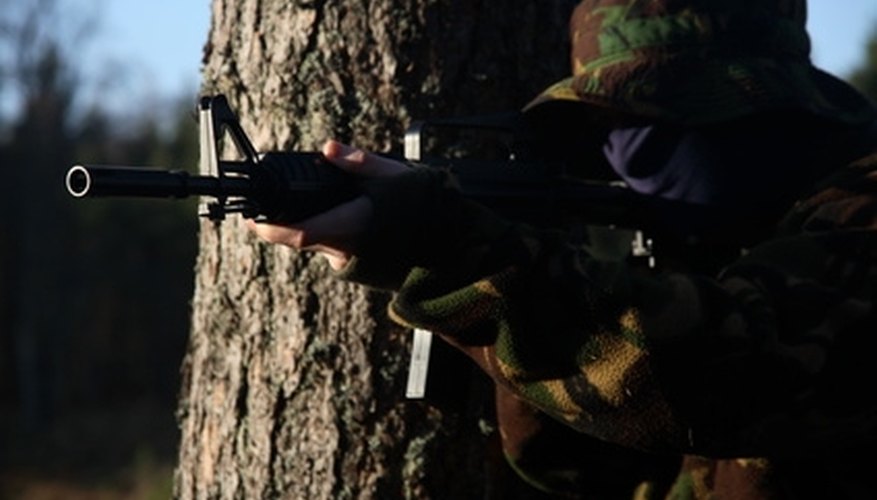
Red dot scopes function by shooting a laser toward a reflective lens in the back end of the scope. The laser bounces off the surface and appears to float in the center of the forward lens. Compatible with rifles, shotguns and handguns, red dot sights enjoy popularity due to their ease of use in nearly all lighting conditions. Red dot sights are adjusted for accurate shooting similar to traditional telescopic scopes.
Adjusting the Scope on the Gun Rail
Step 1
Unload your firearm and remove any cartridges from the chamber. Activate your firearm's safety switch.
Step 2
Determine whether your red dot scope model is adjustable with a Phillips screwdriver or Allen wrench. Both types are popular, but the Phillips-head type is slightly more common.
Step 3
Loosen the screws holding the scope to the gun rail. There is no need to remove the screws entirely.
Step 4
Slide the red dot scope to the desired position on the gun rail.
Step 5
Tighten the screws that were previously loosened. Gun rails are usually quite sturdy, so give the screws a good twist. Loose scope mountings are one of your greatest enemies in firearm accuracy.
Adjusting Windage and Elevation
Step 1
Unload your firearm and remove any cartridges from the chamber. Activate your firearm's safety switch.
Step 2
Remove any knob covers from your red dot scope, if applicable. Set the knobs off to the side.
Step 3
Twist the knob on the side of the scope to adjust windage, which determines where the bullet will land horizontally. For most red dot scopes, each click of the knob will move the bullet's impact location on the target left or right 1/2 inch at 100 yards. Look on the knob for an arrow to determine which direction to turn the knob for left and right adjustment.
Step 4
Twist the knob on the top of the scope to adjust elevation, which determines where the bullet will land vertically. For most red dot scopes, each click of the knob will move the bullet's impact location on the target upward or downward 1/2 inch at 100 yards. Look on the knob for an arrow to determine which direction to turn the knob for upward and downward adjustment.
Step 5
Replace the knob covers when finished adjusting. These covers will prevent the knob from being accidentally jostled or twisted during transportation or storage.
References
Writer Bio
Aaron Kopf graduated from the University of Central Arkansas with honors in 2009, holding a Bachelor of Arts in communication. While enjoying his time at college, Kopf was published in The Echo and Vortex magazine.



